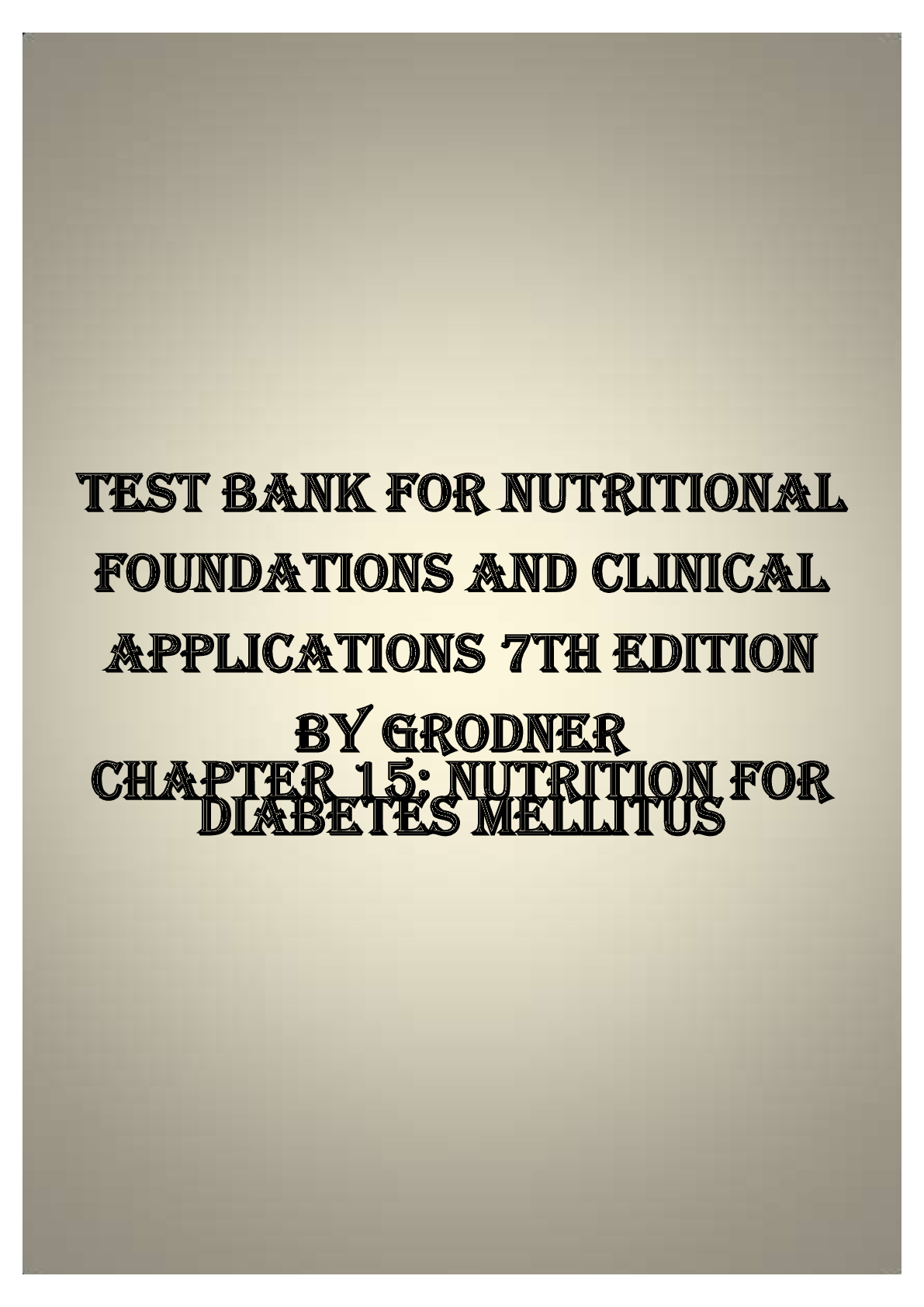*NURSING > TEST BANK > TEST BANK FOR NUTRITIONAL FOUNDATIONS AND CLINICAL APPLICATIONS 7TH EDITION BY GRODNER Chapter 15: N (All)
TEST BANK FOR NUTRITIONAL FOUNDATIONS AND CLINICAL APPLICATIONS 7TH EDITION BY GRODNER Chapter 15: Nutrition for Diabetes Mellitus
Document Content and Description Below
MULTIPLE CHOICE 1. At a routine physical examination, a 50-year-old man has a fasting blood glucose level of 160 mg/dL. The next step in diagnosis and treatment would be a. referral to a diabetes c... linic. b. prescribing an oral hypoglycemic agent. c. rechecking fasting blood glucose level. d. evaluating cardiovascular risk factors. ANS: C Type 2 diabetes mellitus is diagnosed when the fasting blood glucose level exceeds 126 mg/dL on at least two occasions; therefore, the first step in care would be to recheck his fasting blood glucose level. If the diagnosis is confirmed, referral to a diabetes clinic, use of an oral hypoglycemic agent, and evaluation of cardiovascular risk factors may be warranted. DIF: Cognitive Level: Applying REF: Page 322 TOP: Nursing Process: Diagnosis MSC: Client Needs: Physiological integrity 2. If a patient with type 2 diabetes shows early signs of kidney disease, the first priority in nutrition management is a. restricting dietary protein intake. b. normalizing blood glucose levels. c. limiting dietary sodium intake. d. increasing fluid intake. ANS: B If a patient with diabetes begins to develop any kind of complications, the priority in treatment is always normalizing blood glucose levels. Avoiding excessive intakes of protein and sodium and maintaining adequate protein intake may be beneficial but are not the first steps. DIF: Cognitive Level: Analyzing REF: Pages 322-324 TOP: Nursing Process: Planning MSC: Client Needs: Physiological integrity 3. If a patient with type 1 diabetes is unable to maintain good blood glucose control through insulin injections, the physician may recommend a. an oral hypoglycemic agent. b. using an insulin pump. c. more frequent self-monitoring of blood glucose. d. a daily exercise routine. ANS: BAn insulin pump is likely to result in better blood glucose management. Oral hypoglycemic agents cannot be used to treat type 1 diabetes. More frequent self-monitoring of blood glucose and daily exercise may be helpful but are not as beneficial as an insulin pump. A daily exercise routine has definite health benefits, especially for patients with diabetes, but it would not necessarily help normalize blood glucose level. DIF: Cognitive Level: Analyzing REF: Pages 328-329 TOP: Nursing Process: Planning MSC: Client Needs: Physiological integrity [Show More]
Last updated: 3 years ago
Preview 1 out of 11 pages

Buy this document to get the full access instantly
Instant Download Access after purchase
Buy NowInstant download
We Accept:

Reviews( 0 )
$10.00
Can't find what you want? Try our AI powered Search
Document information
Connected school, study & course
About the document
Uploaded On
Jul 11, 2021
Number of pages
11
Written in
Additional information
This document has been written for:
Uploaded
Jul 11, 2021
Downloads
0
Views
8


.png)







.png)















